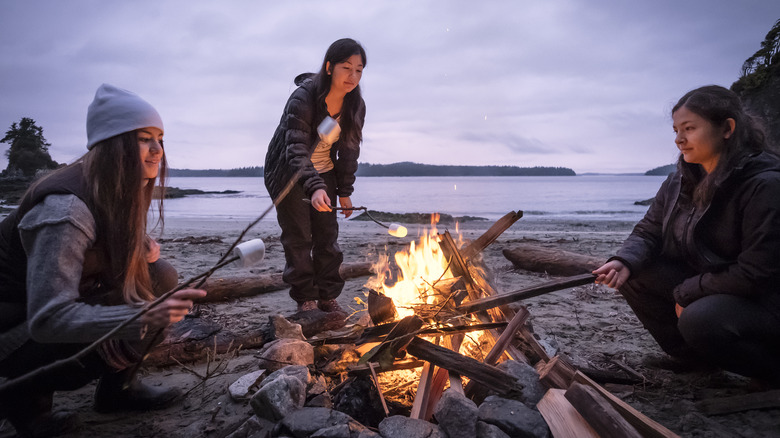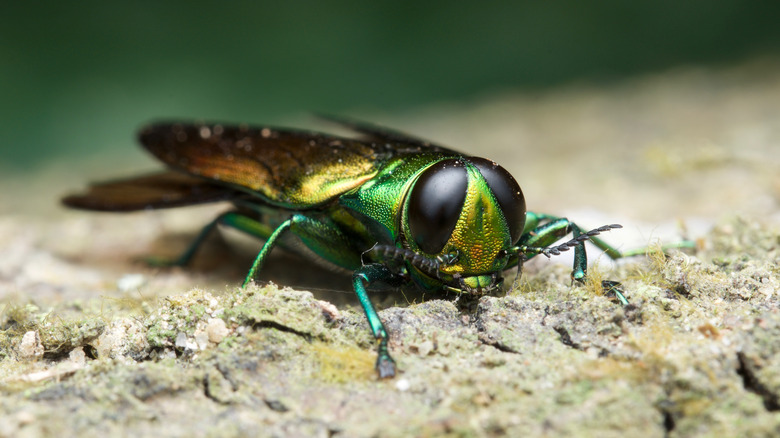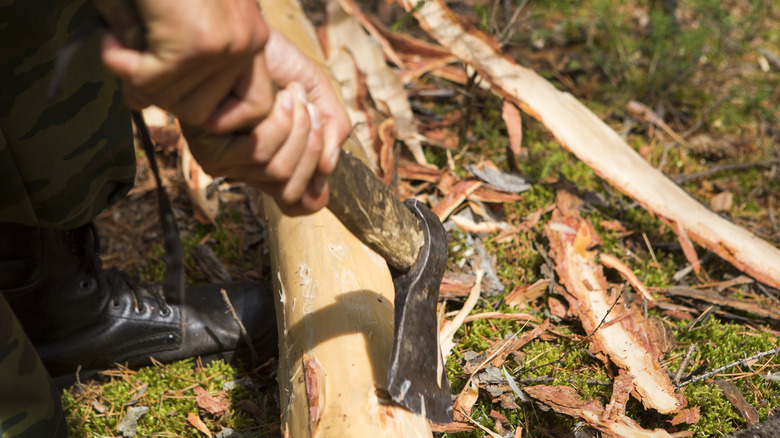The Dangerous Reason You Shouldn't Bring Your Own Firewood To A Campsite
Weather permitting, a campfire is one of the best ways to help you unplug during an escape from everyday life in the wilderness. You might think of firewood as just another item to check off your camping retreat packing list, whether it comes from your backyard at home or the scraps near your tent. In truth, it's a little more complicated than that. The U.S. Department of Agriculture (USDA) wants nature lovers to be much more selective about where their wood comes from. It turns out the whole forest is at stake.
Even if you think you've banished the bugs from your campsite or that a piece of firewood looks healthy (free from fungus, holes, and other signs of pests), invasive species could still be burrowed beneath the surface. In some cases, pests can stick around for over three years inside the wood. To complicate matters, insect eggs could be as small as the size of a pinhead, and fungal spores may only be visible under a microscope. As you can see (or rather not see), when it comes to firewood, looks can be deceiving. In the wild, tree-harming insects may only be able to travel a few miles, but they can travel hundreds of miles in the car of an unsuspecting camper, bringing disease and death to healthy forests.
Invasive insects and fungus kills trees
Many invasive species love the trees as much as campers, including insects like moths, beetles, and wasps. The most problematic is the emerald ash borer (EAB), a beautiful green beetle that is thought to have hitchhiked from Asia to America via some wood panels in 2002. Once it reached its new home in the forests of Michigan, it killed 30 million trees in just 15 years and spread to 35 other states. Unlike native species, which go after frail trees, borers prefer to lay their eggs inside healthy ash trees. At that point, there's little conservationists can do, as the tree will die within 10 years.
The sirex woodwap is another invasive species that appears to be gaining ground, particularly in the northeastern United States and parts of Canada. This pest is a fan of pine trees, laying its eggs and leaving a fungus for its larvae to munch on. Sadly, this fungus prevents the tree from receiving vital nutrients and water, essentially starving the tree to death. If this problem is not contained, the woodwasp could work its way across all the southern pine forests over the next half a century, leaving $2 to $11 billion in damage in its wake. These are just two examples of the many harmful forest invaders. That's why it's best to contain the problem at the source; being more selective about your firewood will give hidden pests less mileage.
How to source safe and local firewood
As a general rule of thumb, you'll want to "buy it where you'll burn it," according to the Don't Move Firewood campaign. It's best to source your firewood as locally as possible. Admittedly, the term "local" is hard to define, as each county will have different regulations and pest-control measures in place. However, most often, local means within 10, 25, or 50 miles. The only exception to this rule is wood that has been certified heat-treated, which means that it meets the USDA's strict regulations for transport. Don't be duped by kiln-dried wood unless it's local. Though it's great for cooking and produces a more efficient burn, there's no guarantee that it's free of invasive species.
To get up to speed on rules in your local area, check the firewood map from Don't Move Firewood and use Firewood Scout to source local wood. You can also get back to your primal roots and gather some wood at the campground yourself, as long as the forest permits wood-cutting. (This is why it's always a good idea for camping enthusiasts to pack items like a multitool.) If acquiring your own wood isn't an option, check the campground store on-site or head to the nearest outdoor store. When you leave, any unused firewood should stay behind. Feel free to donate it to the next camper or use it as an excuse to burn another fire and extend your camping trip for a day or two.


